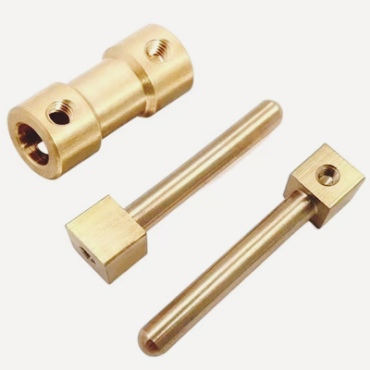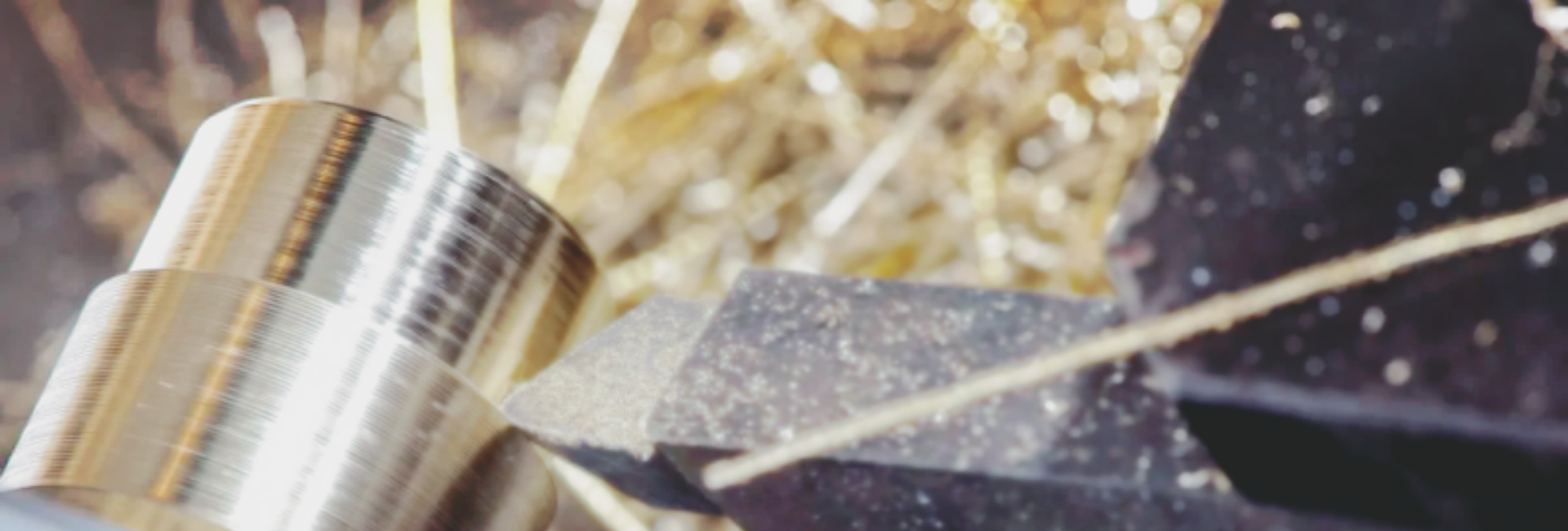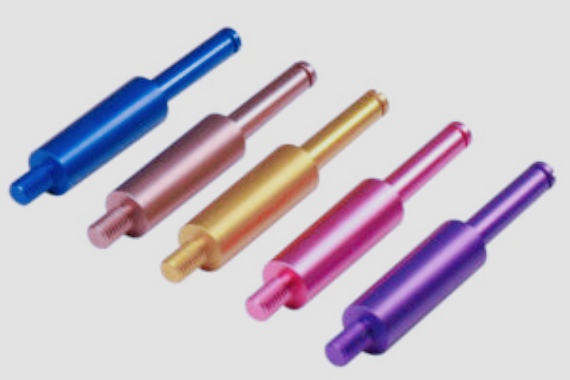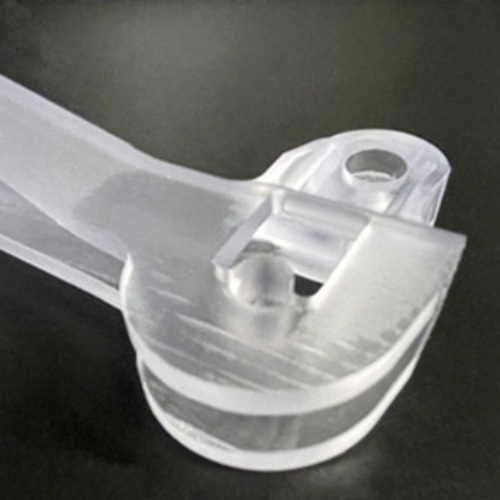What Is Brass Machining
Brass machining is the deformation and forming of brass cut sheets and bar stock into components or finished components. What does brass material mean? Brass materials are copper-zinc alloys. Due to its excellent characteristics, brass materials can use 5-axis linkage machine tools for milling, turning, rapid prototyping, and other brass processing technologies to complete high-precision brass processing when facing complex processing requirements. Applications for brass machine parts made from custom brass include the marine, construction, and automotive industries.
Tirapid can customize brass processing parts of various structures for you: right angle, deep hole, curved surface, and arc. Various forms of brass materials that can be customized for you: brass plate, brass rod, brass tube. If you need it, you can contact our mechanical experts immediately.
Types of Brass Machining
Choosing a suitable brass machining technology is conducive to the high-precision parts manufactured in brass processing.The following are several classifications of CNC machining brass:
Turning brass is a machining technique that uses a lathe to rotate a workpiece and removes surface material with a cutting tool. Commonly used for machining on brass to make cylindrical parts such as shafts, pins, and bushings.

The technique involves cutting, bending, and forming brass sheet metal using CAD software to customize parts and assemblies, resulting in precisely shaped brass machined components.

Laser cutting technology is controlled and guided by a computer, using a high-power laser beam to melt or evaporate excess material on the workpiece. High-precision and complex shapes are cut in brass machining using a laser beam.

Brass milling is a multifunctional machining technique that uses rotating cutting tools to remove material from machined components. Brass machined parts can use the CNC milling brass technique to machine cavities with geometric or other complex shapes.

Rapid prototyping is a technique for additive manufacturing in brass machining. Typically 3D printing or stereolithography is used to construct a physical model of the part from the digital 3D model. Rapid prototyping technology helps to speed up the design process and reduce the risk of errors or design defects, effectively reducing costs.

EDM technology is a brass machining technique that uses electrical discharges to remove material from machined components. Two electrodes (one of which is the workpiece) generate a spark that ionizes the dielectric fluid and creates a plasma channel. This channel melts and vaporizes the material on the workpiece surface, removing small amounts of material. This technology can challenge complex shapes that are difficult to achieve with traditional processing.
Applications of Brass CNC Machining
The excellent mechanical properties, corrosion resistance, and aesthetics of brass machining materials have made brass machining a widely used manufacturing process worldwide, providing machined components for many industries.
Automotive industry: fuel system, brake system, electrical connector.
Construction industry: door handles, nuts, locks, hinges.
Aerospace industry: instrumentation, hydraulic instruments.
Musical Instruments: Industry Brass instruments.
Electrical contacts:connectors, components.
Handicraft industry: bells, key chains, candlesticks.

Why Chose Us
The excellent mechanical properties, corrosion resistance, and aesthetics of brass machining materials have made brass machining a widely used manufacturin
- We have the latest equipment, guarantee the implementation of a strict quality control process, and send experienced mechanics to provide technical support during the machining of manufacturing brass parts.
- We are committed to serving our customers with work efficiency, meeting the turnaround time that customers need for fast processing of brass, and meeting the urgent needs of customers.
- We will provide reasonable customization solutions, help customers make correct brass processing decisions, and complete customized brass fabrication according to requirements.
- We offer competitive and transparent pricing and are a reputable brass machining.
Advantages of Brass Machining
Brass machining materials are a popular machine processing material in the eyes of production and processing. Understand their attributes to help you clear the advantages of brass machining, choose the appropriate processing technology, and complete the machining brass.The following are the advantages of brass machining materials:
Corrosion resistance
Corrosion resistance allows custom brass parts components to survive exposure to harsh environments. Corrosion resistance makes the brass machine parts life longer and more durable, reduces maintenance and replacement costs, and is a reliable processing material.
Extensibility
Brass machine parts are copper-zinc alloys. Alloys with high zinc content have relatively high strength and hardness, which will affect ductility. Through the adjustment of the ratio of zinc content, the brass machine parts can be easily cut by the machine, designed into the required complex shape and size, and possess high strength machinability.
Low melting point
In CNC machining brass, the low melting point means that the brass workpiece consumes less energy in the casting process and is easier to cast. This feature is conducive to improving production efficiency and reducing time costs during mass production and processing.
Brass rod:
Diameter: 1/16 ~ 2 inches
Length: 1 ~ 12 feet
Brass tube:
Outer diameter: 1/16 ~ 6 inches
Wall thickness: 0.010 ~ 0.250 inches
Length: 1 ~12 feet
Brass plate:
Thickness: 0.010 ~0.250 inches
Width: 1 ~ 48 inches
According to the different finished brass parts, some surface treatment processes can be used to beautify the appearance of brass parts, provide corrosion resistance, and improve wear resistance.The surface treatment process has the following types:
Plating
Deburring
Polishing
Anodizing
Painting or powder coating
Grades Of Brass Machining

Brass C220 is also known as Commercial Bronze. It is composed of about 90% copper and 10% zinc. Applications include architectural applications, decorative hardware, and musical instruments. The advantage is that it has a bright golden color and excellent malleability, making it easy to shape. But the disadvantage is that it is not as strong as other brass alloys.

Brass C230 is also known as red brass. It is composed of approximately 85% copper and 15% zinc. Applications include plumbing, marine hardware, and heat exchangers, among others. The advantage is that it has good corrosion resistance and malleability. But the disadvantage is that it is weaker than other brass alloys.

Brass C360 is also known as free-cutting brass. It is composed of approximately 60% copper and 40% zinc. Applications include hardware, electrical components, and accessories. The advantage is excellent processability, which makes it easy to process and shape. But the disadvantage is poor corrosion resistance.

Brass C464 is also known as Navy Brass. It is approximately 60% copper, 39.2% and 0.8% tin. Applications include propellers, valves, and pumps. The advantage is that it has excellent corrosion resistance and is ideal for machining parts in the marine industry. But the disadvantage is that its strength is weaker than other metals.












